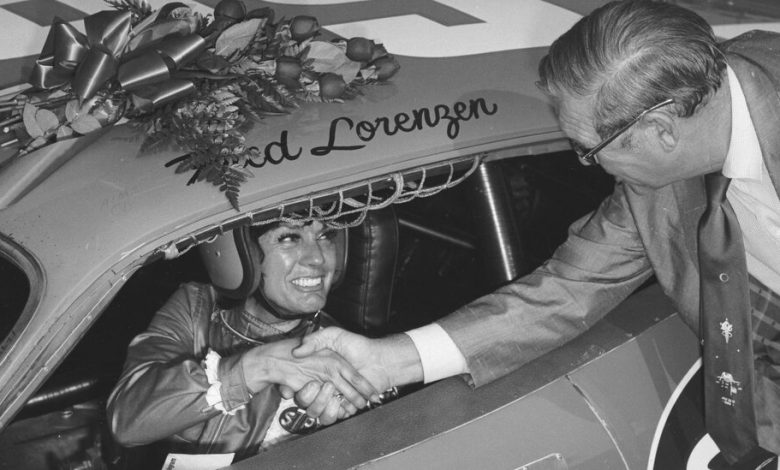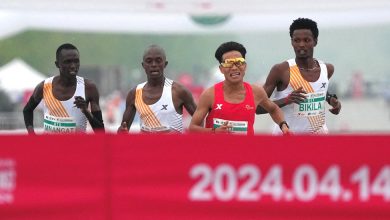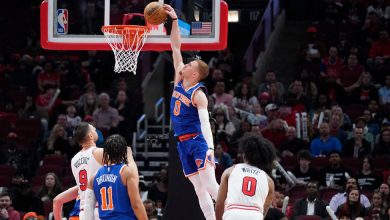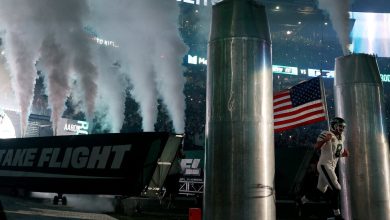Paula Murphy, Once ‘the Fastest Woman on Wheels,’ Dies at 95

Paula Murphy, a leading female car racer in an era when land speed records thrilled the American public, died on Thursday. She was 95.
The National Hot Rod Association announced her death but provided no further details.
Ms. Murphy gained attention in the 1960s and ’70s when she set records for women in drag racing, in stock car racing, in U.S. transcontinental driving, on a closed-course track and on the Bonneville Salt Flats, the Utah staging ground where land speed records were broken. Craig Breedlove’s exploits on the salt flats inspired a 1963 Beach Boys song named after his jet-powered car, “Spirit of America.”
In the late 1970s and ’80s, Shirley Muldowney became known for winning drag races against men; in the 2000s, Danica Patrick won a race in the IndyCar Series. Ms. Murphy was never as prominent as either of them, but she was notable for proving in an earlier era that women had the nerve and the skill to race very fast cars.
She first made national news in 1964 when she became the first woman to zoom across the salt flats in a jet-engine car, setting a speed record for women.
Her vehicle was built by Walt Arfons, who was in the thick of competing against his half brother, Art, and Mr. Breedlove. It spewed a 10-foot flame; its engine screamed; it could be controlled not by steering so much as by the deployment of parachutes.
The car was designed for a man, and when Ms. Murphy got into the cockpit, she could not reach the brake pedal. A big pillow was stuffed behind her back, which raised her up in the seat, exposing her upper body to the full blast of the wind. Before taking off, she said later, she had not received many instructions beyond being told where the accelerator was.
Her sponsor, the racing promoter Andy Granatelli, said he would pay her expenses plus $10 for every mile per hour she achieved.
Ms. Murphy had to contend with wet conditions. Her vehicle fishtailed for about 1,000 feet and came to a stop in four inches of water. She achieved an average speed of 226.37 m.p.h., breaking her own woman’s land speed record of 161.29, set the previous year.
“I feel I’m doing what not too many women do,” she told The Akron Beacon Journal in 1964. “It’s kind of a pioneer spirit. And I get a thrill from the speed. It’s the idea of being in control of this big machine.”
In 1975, The New York Times reported that she was known as “the fastest woman on wheels.” By then, she was a racer full time.
“I’m an oddity, a rarity, and that helps,” she told The Anniston Star of Alabama in an interview during her successful years. “I have 60 to 70 bookings every year.”
Being presented as the world’s inaugural female racecar driver was not always pleasant. “She prepares to sit down in the most unusual office ever occupied by a pretty young lass in a miniskirt,” one TV newscaster said over footage of her approaching her car. In 1964, Sports Illustrated referred to her as a “girl” and a “29-year-old brunette.” She was actually 36, and divorced.
In 1963, she became the first woman to drive laps at the Indianapolis Motor Speedway. “They had me putting on lipstick and patting my hair and giving everyone goo-goo eyes for all the cameras,” Ms. Murphy told the author Erik Arneson for his book “The Fastest Woman on Wheels: The Life of Paula Murphy,” which was published in August. “I did what I was asked to do.”
Interviewers frequently asked Ms. Murphy about what in the 1970s was called “women’s lib.” She tended to reply the same way: “I was doing my own thing before those two words were ever uttered.”
Paula Muhlhauser was born on June 16, 1928, and grew up in Cleveland. Her father, Paul, was a tool designer who built his own sailboats and raced them in his spare time. Her mother, Libbie (Kuchenbecker) Muhlhauser, was an X-ray technician who became a homemaker.
As a girl, Paula competed in speedskating and sailboat racing and in equestrian shows.
She graduated from the University of Cincinnati in 1949 with a degree in health and physical education. She got a job in human resources at General Electric and married a colleague, Dan Murphy. In 1953, she gave birth to a son, Danny.
The couple moved to Southern California for the sake of Mr. Murphy’s career in aerospace sales, but they divorced in 1956. By the time Danny was 10, the family did not even know where Mr. Murphy was, leaving Ms. Murphy to raise him on her own, with the help of her father.
She worked at Marquardt, an aerospace engineering firm in North Hollywood. Friends at work took her to car races. She was fond of saying that her first impression was that they were about as interesting as watching grass grow. Her views changed when she got the chance to race herself.
In 1973, when she was racing a rocket-powered car called the Pollution Packer at the Sears Point Raceway (now the Sonoma Raceway) in Northern California, her parachutes came off her car. She flew off the end of the track at about 300 m.p.h., gained about 70 feet of altitude and crashed. She broke her neck.
At the time, fatal crashes were disturbingly common in racing. Jessi Combs, whose 522.783 m.p.h. is the current woman’s land speed record, crashed and died in 2019 when she decelerated on a dry lake bed in Oregon.
Ms. Murphy retired from racing in the late 1970s and became a buyer for Rocketdyne, a rocket engine company in Los Angeles.
In addition to Mr. Arneson’s book, a Fox Sports documentary about Ms. Murphy, “Paula Murphy: Undaunted,” came out this year.
Complete information about survivors was not immediately available.
Land speed records drew major public attention in the same era as the race to the moon and to the deepest point of the ocean.
Ms. Murphy spoke to something in the national spirit of her day when, in a 1970 interview with The Tampa Tribune, she described her drive at the Bonneville Salt Flats as the experience of reaching the limits of the possible. It was, she said, as if “I was hanging out over the edge of the whole wide world.”



